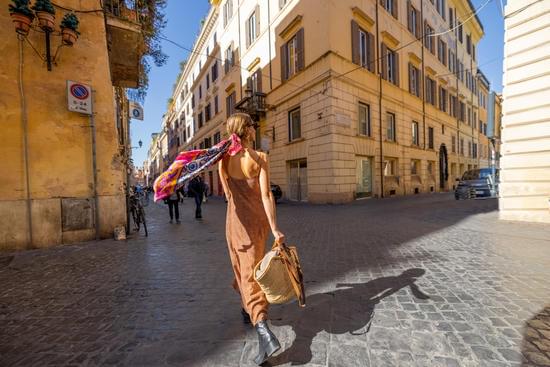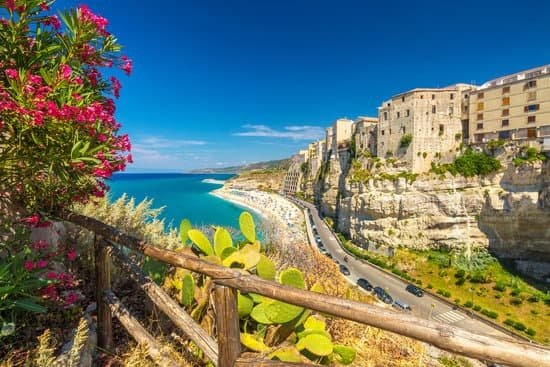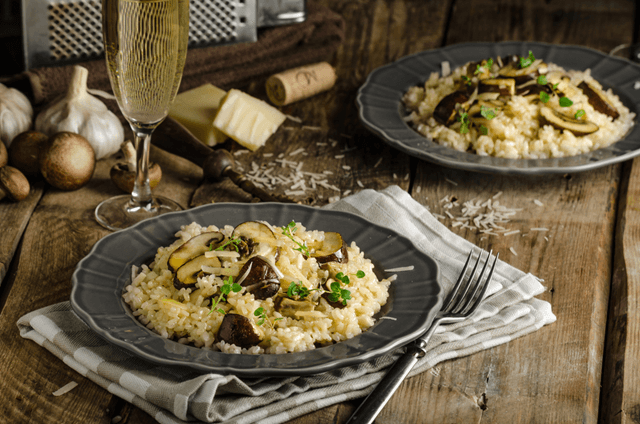Italy’s Renaissance period was not only known for its art, architecture, and literature but also for its mouthwatering cuisine. In this blog post, we embark on a gastronomic journey through time to explore the culinary delights of Italian Renaissance travel. From the origins of Italian Renaissance cuisine to regional dishes and famous eateries, join us as we dive into a world where food played a vital role in shaping society, culture, and even travel experiences.
During the Italian Renaissance, travelers were treated to a diverse array of flavors influenced by Byzantine, Arabic, and Greek cultures. The blending of these influences gave birth to a unique culinary tradition that incorporated exotic spices, aromatic herbs, and sophisticated cooking techniques. As we unravel the origins of Italian Renaissance cuisine, you’ll discover how it evolved over time and became an essential part of the travel experience.
Banquets, festivals, and food rituals held an important place in Italian Renaissance society. Lavish feasts were not only occasions for indulgence but also opportunities for socializing and displaying wealth. As we delve into the world of banquets and rituals during this era, you’ll gain insight into the opulent dining experiences that awaited travelers. From elaborate table settings to extravagant displays of food artistry, these feasts were truly a feast for all senses.
Join us as we uncover the gastronomic gems that characterized Italian Renaissance travel food. Saffron-infused dishes, exotic spices from distant lands, and seasonal produce sourced from local markets all contributed to creating unforgettable culinary experiences. Through exploring the key ingredients and flavors sought after during this time period, you’ll get a taste of the richness that awaited travelers on their journeys across Italy.
So prepare your palate for an adventure through time as we savor the flavors and stories behind Italian Renaissance travel food. From regional delicacies to famous restaurants that catered to travelers’ tastes during this era – there is much to discover about how these culinary delights have shaped Italian cuisine and continue to influence modern dining experiences. Let’s step back in time and savor the exquisite offerings of Italian Renaissance travel food.
A Taste of History
Italian Renaissance cuisine is rooted in a rich tapestry of historical influences, with flavors and ingredients originating from Byzantine, Arabic, and Greek cultures. These ancient civilizations played a pivotal role in shaping the culinary landscape of Italy during the Renaissance period. Understanding the origins of Italian Renaissance cuisine allows us to appreciate the depth and complexity of the dishes enjoyed by travelers during this era.
Byzantine Influence
The Byzantine Empire had a profound impact on Italian Renaissance cuisine, particularly in terms of food preservation and flavor profiles. Byzantine cooking techniques introduced Italians to new methods of preserving food such as salting, drying, and smoking. This allowed travelers to indulge in a wide range of preserved meats, fish, vegetables, and fruits even during long journeys.
Furthermore, Byzantium brought a wealth of flavors to Italy through its spice trade routes with the East. Exotic spices like cinnamon, nutmeg, cloves, and saffron became highly sought after commodities that added complexity and depth to Italian Renaissance dishes.
Arabic Influences
Arab traders who settled in Southern Italy left an indelible mark on Italian Renaissance cuisine through their extensive spice knowledge and agricultural practices. The Arabs introduced Italians to various herbs such as thyme, rosemary, basil, and oregano that now form integral parts of Italian cuisine.
Moreover, Arab agricultural techniques revolutionized farming practices in Italy. They implemented irrigation systems to cultivate previously arid land efficiently. This resulted in increased production levels of fruits such as oranges, lemons, pistachios, apricots, peaches which were subsequently incorporated into Italian Renaissance dishes.
Greek Contributions
The culinary influence from ancient Greece on Italian Renaissance travel food cannot be overstated. With its emphasis on simple preparations that let quality ingredients shine through, Greek cuisine shaped the way Italians approached cooking during this period.
One notable contribution was their use of olive oil as a staple ingredient. Italians quickly adopted the Greek practice, and it became an essential component in Italian Renaissance cuisine. Olive oil was used for cooking, preserving, and even in desserts, adding richness and depth to a wide range of dishes.
The combination of these cultural influences from Byzantium, Arab settlements, and ancient Greece contributed to the distinctive flavors and techniques that define Italian Renaissance cuisine. Travelers during this era were able to experience a truly unique fusion of culinary traditions, creating a gastronomic legacy that continues to be celebrated today in modern Italian cooking.
The Art of Feasting
During the Italian Renaissance, feasting was not merely a means to satisfy hunger but an important social and cultural aspect of society. Banquets, festivals, and food rituals were extravagant affairs that played a significant role in Italian Renaissance travel. These events showcased not only the wealth and power of the hosts but also acted as a way to display their artistic taste, refinement, and social status.
Banquets held during Italian Renaissance travel were elaborate and grandiose affairs. They were often hosted by wealthy nobles or rulers to celebrate special occasions like weddings, births, or diplomatic visits. These banquets served as opportunities for guests to marvel at opulent displays of food artistry while indulging in sumptuous dishes.
The dining tables were adorned with intricately designed sugar sculptures, edible centerpieces, and gilded tableware. Guests would feast on multiple courses that consisted of exotic meats like peacock or swan, delicacies such as caviar and truffles, and an abundance of fruits and desserts.
Festivals were an integral part of Italian Renaissance travel where feasting played a central role. These events brought communities together to celebrate religious holidays or commemorate important historical events. Festivals often included parades, pageants, music performances, theater plays, and art exhibitions.
Food stalls lined the streets offering a variety of delights such as roasted meats, pastries filled with sweet or savory fillings, freshly baked breads, cheeses from different regions of Italy, and fine wines. The atmosphere was lively and vibrant as people gathered to enjoy the festivities while indulging in delicious food.
Italian Renaissance travel also embraced various food rituals that revolved around specific traditions or superstitions. For example, during the Christmas season when households observed fasting before Christmas Eve midnight mass followed by a lavish feast called La Vigilia di Natale (The Vigil of Christmas). This feast marked the end of the fasting period and consisted of an abundance of fish dishes like eel, baccalà (salted cod), and various shellfish.
Another example is the Carnival season where people would participate in masquerade balls, parades, and feasts before the start of Lent. The most famous culinary tradition associated with Carnival is Carnevale di Venezia (Venetian Carnival), which involves indulging in sweets and rich pastries like frittelle and galani.
Italian Renaissance Travel Feasting
| Feasting Events | Description |
|---|---|
| Banquets | Elaborate affairs hosted by nobles to celebrate special occasions. Guests indulged in opulent displays of food artistry. |
| Festivals | Community celebrations that included food stalls offering a variety of delights as people gathered to enjoy the festivities. |
| Food Rituals | Specific traditions or superstitions gave rise to rituals such as feasting after periods of fasting or during holidays. |
These banquets, festivals, and food rituals not only satisfied the physical appetite but also provided opportunities for socializing, networking, and showcasing one’s wealth and power. They exemplified the richness and extravagance of Italian Renaissance travel food culture while being influenced by artistic tastes prevalent during that time. Furthermore, these events left a lasting impact on Italian cuisine, with many traditional dishes originating from these feasting practices still being enjoyed today.
Italian Renaissance cuisine was not just about sustenance; it was an art form that celebrated life’s abundant pleasures. The next section, “Gastronomic Gems: Popular Ingredients and Flavors in Italian Renaissance Travel Food,” delves deeper into the key ingredients and flavors that were sought after during this period, further enriching the culinary landscape of Italian Renaissance travel food.
Gastronomic Gems
Italian Renaissance cuisine was known for its rich flavors and diverse ingredients. The popularity of certain ingredients and flavors during this time played a significant role in shaping the culinary landscape of Italian Renaissance travel food.
One of the most sought-after ingredients during the Italian Renaissance was saffron. Saffron, prized for its vibrant color and distinct flavor, was used to season and enhance a variety of dishes. It was particularly popular in northern Italy, where it was used in risotto, sauces, and even desserts. Not only did saffron add a touch of luxury to these dishes, but it also had medicinal properties that were highly valued at the time.
Exotic spices also played a crucial role in Italian Renaissance travel food. The spice trade flourished during this period, bringing flavors from far-flung places such as India, Egypt, and China to Italy. Spices like cinnamon, cloves, nutmeg, and pepper were used to season both savory and sweet dishes. These spices added depth and complexity to Italian Renaissance cuisine, making it stand out from other European cuisines of the time.
In addition to saffron and exotic spices, regional produce was an important component of Italian Renaissance travel food. Each region had its own specialties based on the local climate and agricultural practices. For example, in Tuscany, olive oil and grapes were abundant due to the region’s mild climate. This led to the creation of dishes like bruschetta with fresh tomatoes or olive oil-drizzled salads with seasonal vegetables.
| Popular Ingredients | Flavors |
|---|---|
| Saffron | Richness & earthiness |
| Exotic spices (cinnamon, cloves, nutmeg, pepper) | Complexity & depth |
| Regional produce (olive oil, grapes, seasonal vegetables) | Freshness & local flavors |
Wanderlust on the Plate
During the Italian Renaissance, each region of Italy had its own distinct culinary traditions and specialties. Travelers during this time would have been treated to a variety of delicious dishes that showcased the unique flavors and ingredients of different areas. In this section, we will take a closer look at some regional Italian Renaissance dishes that were popular among travelers.
Tuscan Treasures
Tuscany is known for its simple yet flavorful cuisine, and during the Italian Renaissance, numerous dishes from this region gained popularity among travelers. One iconic Tuscan dish is ribollita, a hearty vegetable soup made with cannellini beans, kale or cabbage, carrots, and stale bread. Another dish is bistecca alla fiorentina, a grilled T-bone steak seasoned with olive oil, salt, and pepper. This succulent dish is still enjoyed in Florence today.
Venetian Delights
Venice was a bustling hub of trade during the Italian Renaissance, which greatly influenced its cuisine. One beloved Venetian dish from this time was risi e bisi, a creamy dish made with rice and fresh peas. Another popular delicacy was sarde in saor, marinated sardines cooked with onions, vinegar, raisins, and pine nuts. These flavor-packed dishes reflected the maritime influences on Venetian cuisine.
Sicilian Sensations
Sicily has always been known for its vibrant flavors that stem from its rich history of spice trading. During the Italian Renaissance, Sicilian cuisine incorporated exotic ingredients such as cinnamon, cloves, saffron, and raisins into their dishes. Pasta alla Norma is one famous Sicilian pasta dish that originated during this time period. It features eggplant, tomatoes sauce (often flavored with salty capers), and grated ricotta salata cheese.
These are just a few examples of the regional Italian Renaissance dishes that travelers would have encountered on their journeys. Each region offered its own unique culinary treasures, reflecting the landscape, climate, and cultural influences of the area. Trying these regional dishes is a great way to connect with the history and flavors of Italian Renaissance travel food.
From Farm to Table
During the Italian Renaissance, the concept of “farm-to-table” dining was not just a trendy movement but a way of life. Italians valued the freshness and quality of their ingredients, and this was evident in the vibrant marketplaces that were scattered throughout the cities and towns. These marketplaces, known as mercati, were bustling hubs where locals and travelers alike could gather to procure the freshest produce for their meals.
One of the most famous mercati during the Italian Renaissance was in Florence. The Mercato Nuovo, also known as the Loggia del Porcellino, was a covered marketplace where vendors sold an array of fresh fruits, vegetables, meats, and cheeses. Travelers could wander through the stalls, inhaling the enticing aromas and marveling at the colorful displays of produce. The market was also known for its artisans’ workshops, where craftspeople created beautiful ceramics, textiles, and other goods.
In Venice, travelers could experience the unique charm of floating markets. Alongside gondolas and vaporettos gliding along the canals were bàcaro boats selling fresh fish caught from the lagoon. These floating markets allowed Venetians to easily access seafood that had been caught just hours before – a testament to their commitment to using only the freshest ingredients in their cuisine.
To fully immerse themselves in Italian Renaissance travel food culture, travelers would visit these bustling marketplaces with chefs or knowledgeable locals who would guide them through selecting ingredients for their meals. The interaction with vendors and witnessing firsthand how ingredients were sourced added depth to their culinary experiences.
Italian Renaissance Market Shopping Tips
- Arrive early: To secure the best selection of produce, it’s advised to arrive at the markets early in the morning.
- Engage with vendors: Engaging with vendors not only enhances your shopping experience but also allows you to learn about the origins and characteristics of different ingredients.
- Compare prices: Take your time to compare prices from different vendors to find the best deals and quality.
- Ask for recommendations: Don’t be afraid to ask vendors for recommendations on how to prepare or serve certain ingredients. They often have valuable insights and recipes to share.
- Support local producers: Look for signs or labels indicating that the produce is locally sourced, supporting small-scale farmers and artisans.
By emphasizing the importance of locally sourced ingredients, Italian Renaissance marketplaces laid the foundation for the farm-to-table movement that would emerge centuries later. The culture of valuing fresh, seasonal produce became ingrained in Italian cuisine and continues to be celebrated in modern-day Italy.
A Gastro-tourist’s Guide
Italy is a country renowned for its culinary heritage, and the Italian Renaissance was no exception. For food lovers traveling back in time, there are several must-try Italian Renaissance travel food experiences that capture the essence of this era.
One iconic experience is visiting historic taverns or osterias, which were popular gathering places for travelers during the Italian Renaissance. These establishments not only provided nourishment but also offered a sense of community as people would gather to eat, drink, and socialize.
Here, visitors can indulge in traditional dishes like polenta served with stews or hearty soups made with seasonal vegetables and herbs. It’s an opportunity to taste authentic Italian Renaissance fare in a setting that recreates the ambiance of the past.
Another unique food experience is attending food festivals that celebrate the culinary traditions of the Italian Renaissance. These festivals often take place in picturesque towns and feature stalls selling traditional foods and drinks. Visitors can sample delicacies like porchetta (a slow-roasted pork dish) or tortelli di zucca (pumpkin-filled pasta), while enjoying live entertainment and immersive cultural activities. The medieval-inspired settings enhance the overall experience, allowing participants to feel transported back in time.
For those seeking a more luxurious dining experience, famous Italian Renaissance-era restaurants and eateries are a must-visit. These establishments catered to nobility and wealthy travelers, providing lavish meals that showcased the opulence and refinement of the era. With refined dishes like peacock pie or roasted boar served with rich sauces, these restaurants offer a glimpse into the extravagant feasts enjoyed by nobles during this period.
Pleasure Palaces
During the Italian Renaissance, dining out was not only about satisfying hunger but also a status symbol and an opportunity for socializing. The wealthy nobles and upper-class citizens of the time frequented luxurious restaurants and eateries, which were often referred to as “pleasure palaces.” These establishments not only provided exquisite food but also created an ambiance that transported diners to a world of opulence and indulgence.
One famous pleasure palace during the Italian Renaissance was Ristorante delle Corti in Florence. Known for its elaborate decor, live music, and sumptuous feasts, this restaurant attracted nobles from all over Italy. Guests were treated to multi-course meals that showcased the finest ingredients like truffles, exotic spices, and game meats.
The service was impeccable, with waitstaff dressed in elegant attire and attending to every need of the patrons. The Ristorante delle Corti became a center for art and culture, with musicians performing while diners enjoyed their meals.
Another renowned establishment of the time was Da Iseo in Venice. Located near the bustling Grand Canal, this restaurant offered breathtaking views along with its exceptional food.
Venetian cuisine was heavily influenced by seafood due to its location on the Adriatic Sea, and Da Iseo capitalized on this by serving fresh seafood dishes like baccalà mantecato (creamed cod) and risotto al nero di seppia (black cuttlefish risotto). Diners could enjoy these delectable dishes while admiring gondolas passing by or taking in the striking architecture of nearby palaces.
Finally, in Rome, La Talpa d’Oro stood out as an iconic restaurant during the Italian Renaissance. With its rustic yet elegant atmosphere, it attracted visitors from all walks of life – from artists and writers to cardinals and diplomats.
The menu featured traditional Roman fare such as pasta carbonara, cacio e pepe (cheese and pepper pasta), and trippa alla romana (Roman-style tripe). What made La Talpa d’Oro truly unique was its wine selection, which boasted an extensive list of local wines from the surrounding Lazio region.
These pleasure palaces were more than just places to eat; they were venues where people could indulge in sensory experiences, appreciate fine art and music, and engage in lively conversations. Today, many restaurants across Italy pay homage to the opulence and grandeur of Italian Renaissance dining by recreating the ambiance of these historic establishments.
By visiting these modern interpretations, travelers can get a glimpse into the lavish world of Italian Renaissance travel food and continue to savor the rich history of this culinary era.
The Legacy of Italian Renaissance Travel Food
Italian Renaissance travel food has left a lasting legacy on modern Italian cuisine, with its influence seen in various aspects of contemporary culinary practices. One key aspect that has been greatly impacted is pasta. The Italian Renaissance saw the rise of fresh homemade pasta as a staple, and this tradition continues to be cherished today. Many popular pasta dishes that are enjoyed worldwide, such as spaghetti carbonara and fettuccine alfredo, can trace their roots back to the Italian Renaissance.
Additionally, the concept of farm-to-table dining, which emphasizes using locally sourced and seasonal ingredients, can also be attributed to Italian Renaissance travel food. During this period, there was an increased emphasis on using fresh produce and supporting local farmers.
This approach to cooking and dining not only ensures the freshest flavors but also promotes sustainability and a connection to one’s surroundings. Today, many restaurants around the world strive to embody these principles by prioritizing locally sourced ingredients and highlighting regional specialties.
Furthermore, the Italian Renaissance brought about a fascination with exotic spices and flavors from other cultures. Influences from Byzantine, Arabic, and Greek cuisines introduced new ingredients like saffron, cinnamon, cloves, and nutmeg into Italian cooking. These flavors continue to be celebrated in modern Italian cuisine through dishes such as risotto milanese or panforte from Siena.
Overall, the legacy of Italian Renaissance travel food can be felt in numerous ways within modern Italian cuisine. From the art of pasta-making to farm-to-table dining practices and incorporating exotic flavors into traditional recipes, these influences continue to shape culinary experiences today. Exploring the rich history of Italian Renaissance travel food allows us to appreciate its enduring impact on our gastronomic adventures and reminds us of how our love for delicious food transcends time.
Conclusion
Italian Renaissance travel food holds a special place in culinary history, with its rich flavors and unique traditions. Throughout this article, we have explored the origins of Italian Renaissance cuisine, delved into the extravagant banquets and feasts of the time, and discovered the regional dishes that continue to tantalize taste buds today. From farm-to-table practices to the influence on modern Italian cuisine, it is clear that Italian Renaissance travel food has left a lasting impact.
One cannot underestimate the historical significance of Italian Renaissance travel food. The blending of Byzantine, Arabic, and Greek influences created a uniquely diverse culinary landscape that continues to be celebrated today. The opulent banquets and rituals in Italian Renaissance society demonstrated not only a love for lavishness but also an appreciation for the artistry of food presentation.
The influence of Italian Renaissance travel food can still be seen in modern-day Italy. Through its emphasis on locally sourced ingredients and farm-to-table practices, this era laid the foundation for the concept of sustainability in cooking. Even pasta recipes and flavor profiles have been passed down through generations, showcasing how deeply ingrained this period’s gastronomy is in Italian culinary tradition.
In conclusion, exploring Italian Renaissance travel food allows us to embark on a journey through history while savoring flavors that have stood the test of time. From region-specific dishes to grand feasts fit for royalty, each aspect paints a picture of a vibrant culinary culture shaped by centuries of tradition and innovation.
So whether you find yourself indulging in authentic regional dishes during your travels or attempting to recreate them at home, take a moment to appreciate the richness that Italian Renaissance travel food offers-a true feast for both palate and soul.
Frequently Asked Questions
What food was popular in Italy during the Renaissance?
During the Renaissance, one popular food in Italy was pasta. However, it is important to note that pasta during this time looked quite different from what we commonly associate with it today. Pasta was typically made by hand using simple ingredients such as flour and water, which were kneaded together and then rolled out into thin sheets before being cut into various shapes.
These shapes would later be boiled or baked and served with a variety of sauces, vegetables, or meats. Pasta quickly became a staple in Italian cuisine during the Renaissance due to its versatility and ability to be easily preserved.
What kind of food was eaten during the Renaissance?
The diet of people during the Renaissance was heavily dependent on their social status and region within Italy. Generally, however, the focus was on consuming freshly available foods such as fruits, vegetables, grains, meat (especially pork), dairy products like cheese and butter, and fish.
The idea of balancing flavors also played an essential role in Renaissance cuisine – a harmonious combination of sweet and savory flavors was highly valued in dishes. Herbs and spices were used abundantly to enhance flavors, while honey was often utilized as a natural sweetener.
What foods did Italian immigrants bring?
Italian immigrants brought various traditional foods to their new destinations when they emigrated from Italy. Some notable examples include pizza, which originated in Naples but gained vast popularity globally after Italian immigration waves in the late 19th century; pasta dishes like spaghetti with meatballs that are now synonymous with Italian-American cuisine; cannoli – delicious pastries filled with sweet ricotta cheese mixture; risotto that showcases Northern Italian culinary traditions; and dishes featuring tomato sauce since tomatoes had not been widely embraced by European cultures until the 16th century after contact with the New World.
These dishes not only enriched the culinary landscape of their new homes but also provided immigrants a connection to their cultural heritage through food.

I’m a passionate traveler, writer, and Italophile. My fascination with Italy’s history, art, and culture has led me on countless adventures across the Italian landscape. Through “I Live Italy,” I share my love for this extraordinary country and aims to inspire others to explore its boundless beauty.





